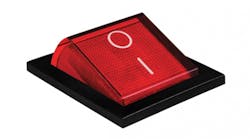As the electronic devices that permit current to flow in a single direction, light-emitting diodes (LEDs) play an important role in a number of electronics applications, in particular those focused on using less energy, brilliant colors/hues, and state-of-the-art technology. A preferred component for entities that are looking to “go green” by using less electricity, for example, the LED is taking center stage in everyday applications—from televisions to store signage to scoreboards.
Between 2011 and 2014, the price for LEDs trended downward at about 1.6 percent annually on average, according to IBIS World. This electronics category exhibited “low volatility” during that time, and even in the face of increasing demand, a growing number of imported LEDs, and greater market competition. Making the components particularly attractive is the lower total cost of ownership (TCO) that they offer users, IBIS World reports, although installation and maintenance costs must be factored into the equation.
“These costs are minimal when compared with the price of LEDs; furthermore, these costs are minimal when compared with the substitute goods available, such as incandescent and fluorescent lights,” the group said in a recent report on the LED market.
With the fourth quarter right around the corner, Robbie Paul, director of lighting sales at electronic components distributor Digi-Key in Thief River Falls, Minn., says the price erosion seen within the LED market between 2011 and 2014 has continued this year.
“It’s basically accelerating right now,” Paul says, “and primarily due to increased volume, manufacturing efficiencies, and growing demand. As a result, prices are continuing to fall.”
In short, Paul says LEDs are becoming more commoditized in the sense that multiple manufacturers are making the exact same product package sizes and power levels.
“The differentiation among manufacturers’ products has been greatly reduced, and hence commoditized,” says Paul. And because the LED is an easily substitutable/replaceable part, the availability of product on the market is driving pricing down even more.
“Smart consumers can pit one supplier against the next,” says Paul. “In fact, we see that happening right now.”
In terms of manufacturing trends, he says efficiencies such as a move to using larger wafer sizes is helping to boost yields during the LED production process.
“This is yet another trend that is impacting price and availability,” Paul says.
There are also signs of new innovation within the LED market, where Durham, N.C.-based Cree just signed a global LED chip patent cross-license agreement with Epistar. With the goal of further advancing the growth of the LED Lighting and LED bulb markets, the companies—both of which hold broad and substantial LED chip patent portfolios, according to a Cree press release—will each receive a license to the other’s nitride LED chip patents and be granted certain rights to non-nitride LED chip patents.
“This agreement underscores both companies’ commitment to accelerating the adoption of LED lighting,” said Cree CEO Chuck Swoboda, in the press statement, “while respecting the value and importance of international intellectual property laws.”
This and other innovative moves on the part of manufacturers could keep pricing low and availability high for the next 12 months or more. Paul, who says standard lead times for LEDs are hovering in the 6- to 8-week range, says that time frame hasn’t changed much in 2015.
“Overall, lead times have not really gone up or down,” says Paul. “In fact, they’ve pretty much stayed the same this year.”
Going forward, Paul said he expects the current LED price erosion trend to continue for the next year or two.
“At that point, we could see the technology advances kind of level off in terms of how much more light you can get out of a single die and so forth,” Paul says. “Then we’ll see a reversion back to companies using standard manufacturing-type efficiencies.”








